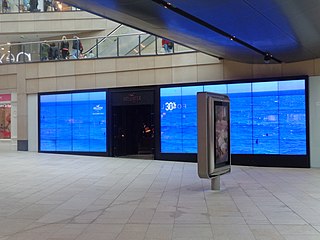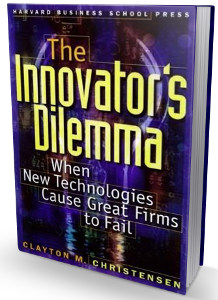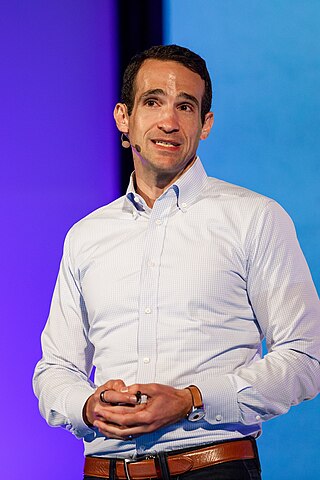
Sales are activities related to selling or the number of goods sold in a given targeted time period. The delivery of a service for a cost is also considered a sale. A period during which goods are sold for a reduced price may also be referred to as a "sale".

Guerrilla marketing is an advertisement strategy in which a company uses surprise and/or unconventional interactions in order to promote a product or service. It is a type of publicity. The term was popularized by Jay Conrad Levinson's 1984 book Guerrilla Marketing.
The subscription business model is a business model in which a customer must pay a recurring price at regular intervals for access to a product or service. The model was pioneered by publishers of books and periodicals in the 17th century, and is now used by many businesses, websites and even pharmaceutical companies in partnership with governments.
Market penetration refers to the successful selling of a good or service in a specific market. It involves using tactics that increase the growth of an existing product in an existing market. It is measured by the amount of sales volume of an existing good or service compared to the total target market for that product or service. Market penetration is the key for a business growth strategy stemming from the Ansoff Matrix (Richardson, M., & Evans, C.. H. Igor Ansoff first devised and published the Ansoff Matrix in the Harvard Business Review in 1957, within an article titled "Strategies for Diversification". The grid/matrix is utilized across businesses to help evaluate and determine the next stages the company must take in order to grow and the risks associated with the chosen strategy. With numerous options available, this matrix helps narrow down the best fit for an organization.

In statistics and business, a long tail of some distributions of numbers is the portion of the distribution having many occurrences far from the "head" or central part of the distribution. The distribution could involve popularities, random numbers of occurrences of events with various probabilities, etc. The term is often used loosely, with no definition or an arbitrary definition, but precise definitions are possible.
Marc Ostrofsky is an American entrepreneur, venture capitalist, New York Times Best Selling Author and public speaker. He is the author of the books Get Rich Click!: The Ultimate Guide to Making Money Online, and Word of Mouse: 101+ trends using technology on How we Buy, Sell, Live, Learn, Work and Play!. Get Rich Click was in the top ten of the lists of bestselling books compiled by USA Today, The Wall Street Journal and The New York Times.
In online marketing, a landing page, sometimes known as a "lead capture page", "single property page", "static page", "squeeze page" or a "destination page", is a single web page that appears in response to clicking on a search engine optimized search result, marketing promotion, marketing email or an online advertisement. The landing page will usually display directed sales copy that is a logical extension of the advertisement, search result or link. Landing pages are used for lead generation. The actions that a visitor takes on a landing page are what determine an advertiser's conversion rate. A landing page may be part of a microsite or a single page within an organization's main web site.
Wharton School Press (WSP) is the book publishing arm of The Wharton School of the University of Pennsylvania. It was established in 2011 and is headquartered in Philadelphia, Pennsylvania.

A business can use a variety of pricing strategies when selling a product or service. To determine the most effective pricing strategy for a company, senior executives need to first identify the company's pricing position, pricing segment, pricing capability and their competitive pricing reaction strategy. Pricing strategies and tactics vary from company to company, and also differ across countries, cultures, industries and over time, with the maturing of industries and markets and changes in wider economic conditions.
Regis McKenna was an American marketer in Silicon Valley and introduced some techniques today commonplace among advertisers. He and his firm helped market the first microprocessor, Apple's first personal computer, the first recombinant DNA genetically engineered product, and the first retail computer store.
Sales engineering is a hybrid of sales and engineering that exists in industrial and commercial markets. An engineering degree is not mandatory for a sales engineer, as long as they have sales knowledge and sufficient technical knowledge of the service or product they are called sales engineer. Buying decisions in these markets are made differently than those in many consumer contexts, being based more on technical information and rational analysis and less on style, fashion, or impulse. Therefore, selling in these markets cannot depend on consumer-type sales methods alone, and instead it relies heavily on technical information and problem-solving to convince buyers that they should spend money on the seller's products or services, in order to meet a business need. A sales engineer is thus both "a salesperson that understands and can apply engineering" and "an engineer that understands how to sell engineered systems". They thus not only sell but also provide advice and support. They provide this service to various internal or external customers, and they may work for a manufacturer, for a distributor, or for a third party such as an engineering consultancy or a systems integrator.
In marketing, a customer value proposition (CVP) consists of the sum total of benefits which a vendor promises a customer will receive in return for the customer's associated payment.
Customer experience, sometimes abbreviated to CX, is the totality of cognitive, affective, sensory, and behavioral customer responses during all stages of the consumption process including pre-purchase, consumption, and post-purchase stages.
Multivariate landing page optimization (MVLPO) is a specific form of landing page optimization where multiple variations of visual elements on a webpage are evaluated. For example, a given page may have k choices for the title, m choices for the featured image or graphic, and n choices for the company logo. This example yields k×m×n landing page configurations.
Lean startup is a methodology for developing businesses and products that aims to shorten product development cycles and rapidly discover if a proposed business model is viable; this is achieved by adopting a combination of business-hypothesis-driven experimentation, iterative product releases, and validated learning. Lean startup emphasizes customer feedback over intuition and flexibility over planning. This methodology enables recovery from failures more often than traditional ways of product development.
Pay what you want is a pricing strategy where buyers pay their desired amount for a given commodity. This amount can sometimes include zero. A minimum (floor) price may be set, and/or a suggested price may be indicated as guidance for the buyer. The buyer can select an amount higher or lower than the standard price for the commodity. Many common PWYW models set the price prior to a purchase, but some defer price-setting until after the experience of consumption. PWYW is a buyer-centered form of participative pricing, also referred to as co-pricing.

The Innovator's Dilemma: When New Technologies Cause Great Firms to Fail, first published in 1997, is the best-known work of the Harvard professor and businessman Clayton Christensen. It expands on the concept of disruptive technologies, a term he coined in a 1995 article "Disruptive Technologies: Catching the Wave". It describes how large incumbent companies lose market share by listening to their customers and providing what appears to be the highest-value products, but new companies that serve low-value customers with poorly developed technology can improve that technology incrementally until it is good enough to quickly take market share from established business. Christensen recommends that large companies maintain small, nimble divisions that attempt to replicate this phenomenon internally to avoid being blindsided and overtaken by startup competitors.
Product-market fit, also known as product/market fit, is the degree to which a product satisfies a strong market demand.

The Business Model Canvas is a strategic management template used for developing new business models and documenting existing ones. It offers a visual chart with elements describing a firm's or product's value proposition, infrastructure, customers, and finances, assisting businesses to align their activities by illustrating potential trade-offs.

Nir Eyal is an Israeli-born American author, lecturer, and investor known for his bestselling book, Hooked: How to Build Habit-Forming Products.







